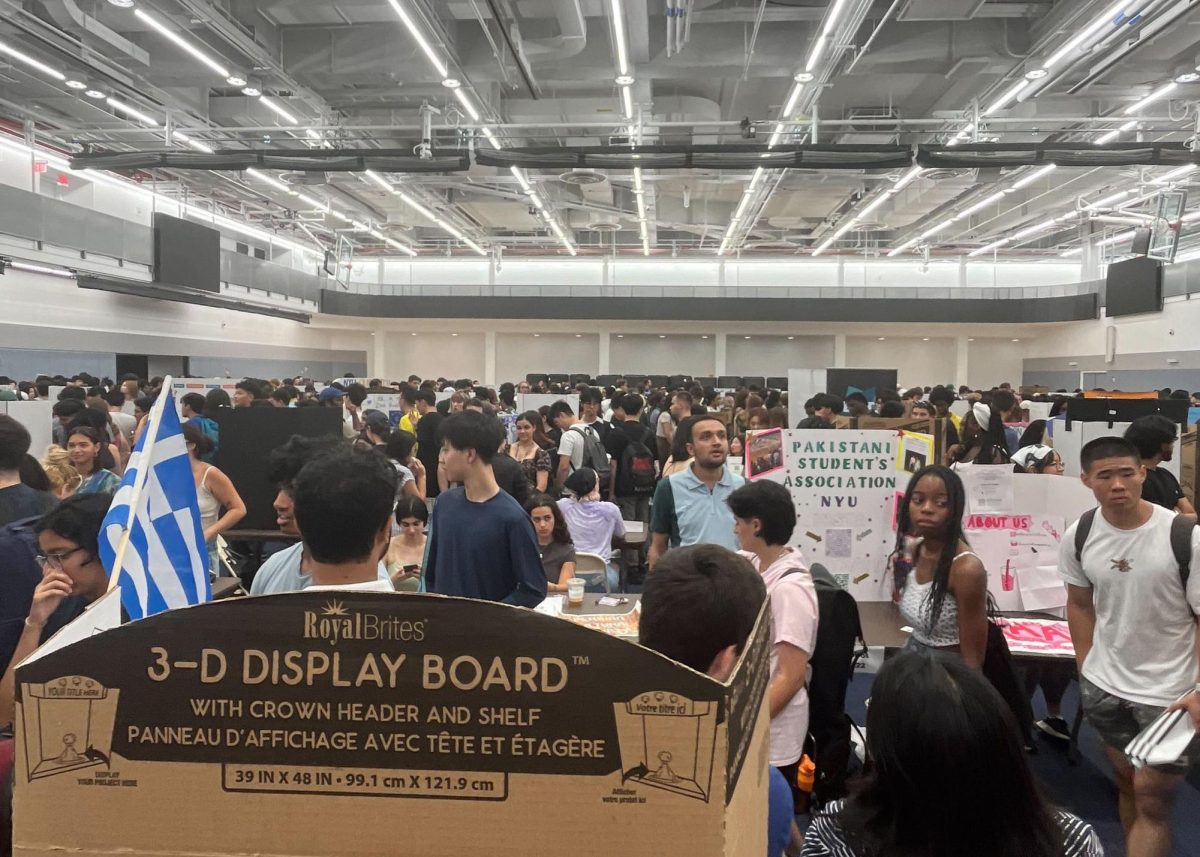NYU’s Club Fest at the Paulson Center was hosted for students to find their place among the over 300 clubs offered at the university. Instead, students found themselves corralled into a sweaty gym while club officers struggled to have their voices heard over the crowd.
Ultimately, NYU’s lack of organization and planning made it impossible for Club Fest to achieve its intended purpose.
Navigating the hot, loud and overcrowded space was a daunting task. Spotty cell service and Wi-Fi made it difficult to text the friend you were supposed to meet up with and interact with club websites. As a result, students found themselves swept along with the crowd’s current and no sense of clear direction.
“It was like a zoo and I wanted to get out as fast as possible,” said Maya Hajjar, a first-year at NYU Steinhardt.
The space in the gym was also inefficiently utilized, with tables crammed into narrow parallel rows in its center and lots of unused space along the perimeter. The rows weren’t organized numerically, making it difficult to locate specific clubs. NYU did provide a QR code with a club directory, but it was rendered useless by the lack of Wi-Fi. It would have been more helpful if the clubs were separated by categories on different floors.
The event was not only disorganized, but could have been hazardous. As NYU’s self-reported “largest community-building event,” it brought together not only first-years, but a good percentage of upperclassmen as well. The sheer amount of students packed in one room raised concerns both for the spread of COVID-19 and of a potentially dangerous situation in case of an emergency since there was only one exit.
For many students, it was their first time attending a club fair, and the anticipation of participating in a school event quickly turned into disappointment. It’s undeniable that joining clubs is a crucial aspect to the college experience, especially at NYU where the absence of a traditional campus makes finding community hard — even more so for first-years.
Organizations like the Native American and Indigenous Student Group, which has 30 members, count on club fairs like this to grow their organization. However, the setup made it impossible to make connections or engage in conversations without getting nudged, pushed or smacked by a backpack. Ultimately, the event defeated its own purpose as clubs couldn’t even successfully communicate with potential members.
“I didn’t have enough room to stand to the side of our table; most of the time I was blocking the view to our poster board,” said Steinhardt senior and NAISG table runner Bridget Harshman.
I eventually found my way to the Puerto Rican Student Association table, where I managed to introduce myself, jot down my email, snatch a piece of candy and then get swept back into the sea of my peers all trying to do the same.
Under these conditions, it was a challenge to truly understand what each club had to offer — students were too occupied trying to stay afloat. If Club Fest had been multiple days long with clubs split into categories instead of showcased all at once, students would have been able to make informed decisions on their future at NYU.
NYU’s Club Fest was meant to foster community, ignite school spirit and bring students together. Instead, it turned into a mess of overstimulated students. The event could have been more effective with simple changes, but became another example of NYU’s consistent lack of planning instead.
WSN’s Opinion section strives to publish ideas worth discussing. The views presented in the Opinion section are solely the views of the writer.
Contact Abi Rivera at [email protected]

























































































































































